Frequent readers know my love for flight, new ones perhaps not so much. My last international flight of 2020 pre-pandemic was a BOM-BLR-LHR-ORD-SEA-LHR-BLR-BOM at the end of February when I flew over to Seattle. Domestically, I flew BOM-DEL on Vistara, DEL-LKO on IndiGo and then GOP-BOM on SpiceJet back in March before it was time to be locked down.
Airlines remained grounded till May 25, 2020, when domestic aviation was allowed to start again. For the first few months, my lookout was that people who were displaced should get a seat to fly back home; hence, I did not jump on the bandwagon of people flying. This past weekend, I thought, was a good time to test how airline and airport procedures work in the times of the pandemic, and we decided to fly somewhere for a quick getaway.
Shipra and I had a trip to Jaipur over the Good Friday long weekend on the books, and we had to cancel it at that point of time. So when the time to fly again came, we figured it would be a good idea to pick up from where we left and made Jaipur our first destination. The Mumbai – Jaipur segment was being flown non-stop only by three airlines. We chose IndiGo because of the time and reliability of the airline, and also the fact that I trusted IndiGo to do a good job on the hygiene aspect after my earlier conversation with William Boulter, the CCO of IndiGo back in June 2020. You can watch him speak about the Lean Clean Flying Machine positioning of the airline at this link.
Web Check-in is now mandatory.
First things first. For flying here-on, web check-in is mandatory. You could use a laptop or a cellphone to check-in, or you could arrive at the airport at least 60 minutes out and use the public machines to the check-in kerbside. IndiGo was prompt in reminding us every step of the way about, and we were booked into Row 1 for the outward flight. Apart from check-in, you also have to indicate if you are carrying a bag for check-in and generate a baggage tag online as well. A health declaration, as mandated by the Government of India, is also included amongst everything you have to sign off on before you get your boarding pass.
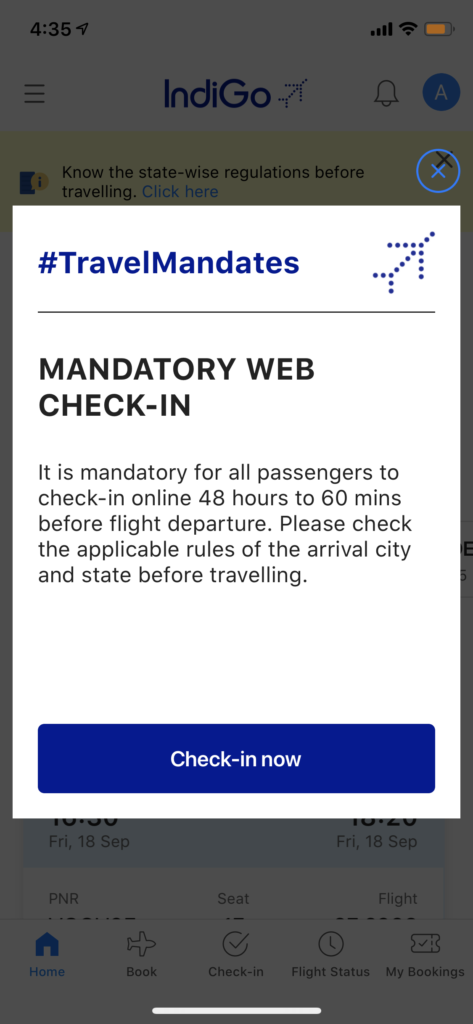

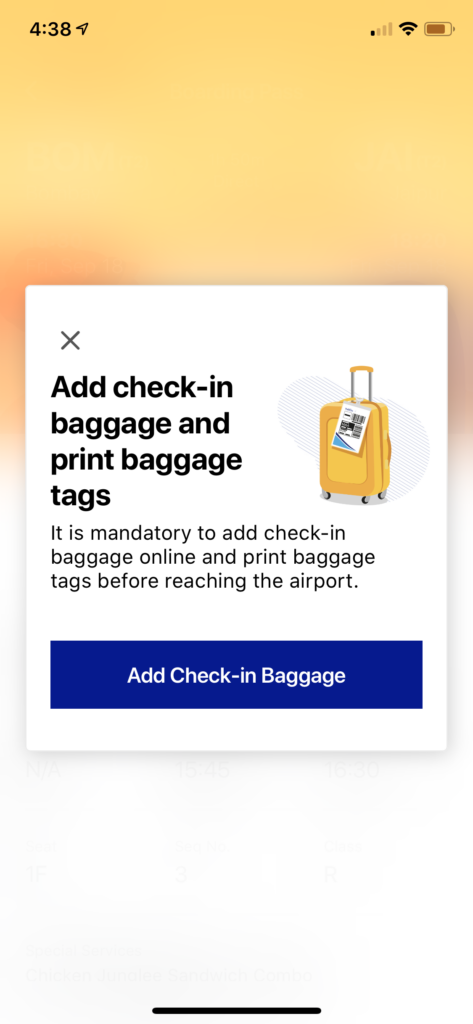
At the Mumbai Airport Terminal 2
Mumbai Airport operations are currently consolidated at Terminal 2, and the older smaller Terminal 1 is not being used. There are only limited operations allowed every day in terms of flight operations in and out of Mumbai, so the airport is consequently not as full as it used to be.
The driveway for dropping passengers outside has been converted to a queue buster where people can maintain distance as they undergo a temperature check to enter the airport. Each airline gets a fixed gate assignment in front of their check-in aisles so that people don’t move around the airport and directly go to their airline’s aisle.
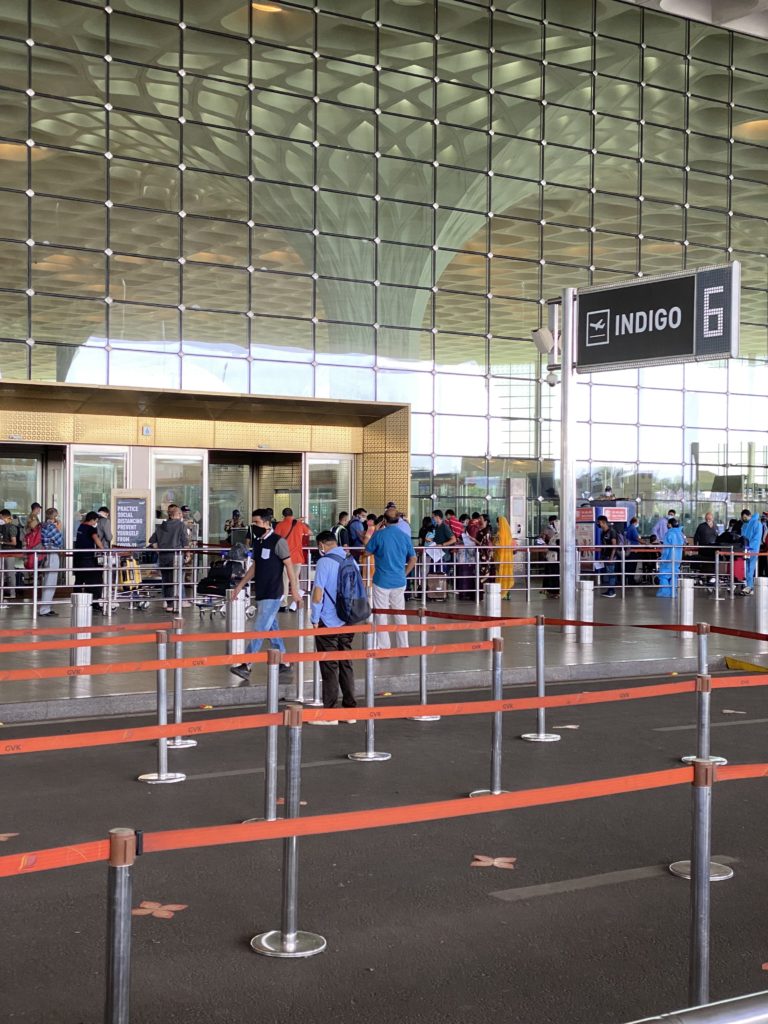
Mumbai Airport still insists on an Aarogya Setu app even though other airports provide the option of writing a health declaration offline. They just wouldn’t let you in otherwise, unfortunately. Before even being able to enter the airport terminal, I had to show the app twice, and also get a temperature check done.
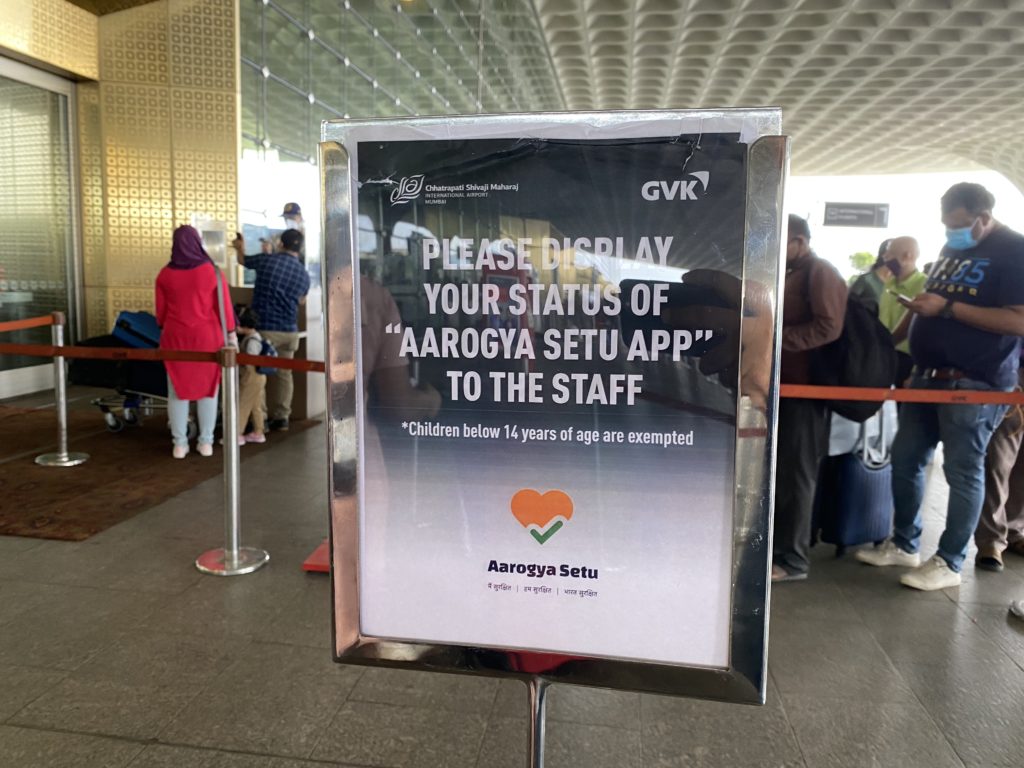
The security apparatus has evolved to admit you into the airport. Earlier a copy of your ticket would be fine along with identification. Now, the security personnel have moved behind plexiglass to ensure distance from passengers, and they also scan your boarding pass bar code to check the validity of the ticket on their computer. This tends to slow down the process a bit, but the advice is to arrive 3 hours before departure anyways at this time to ensure enough time for getting to the gate.
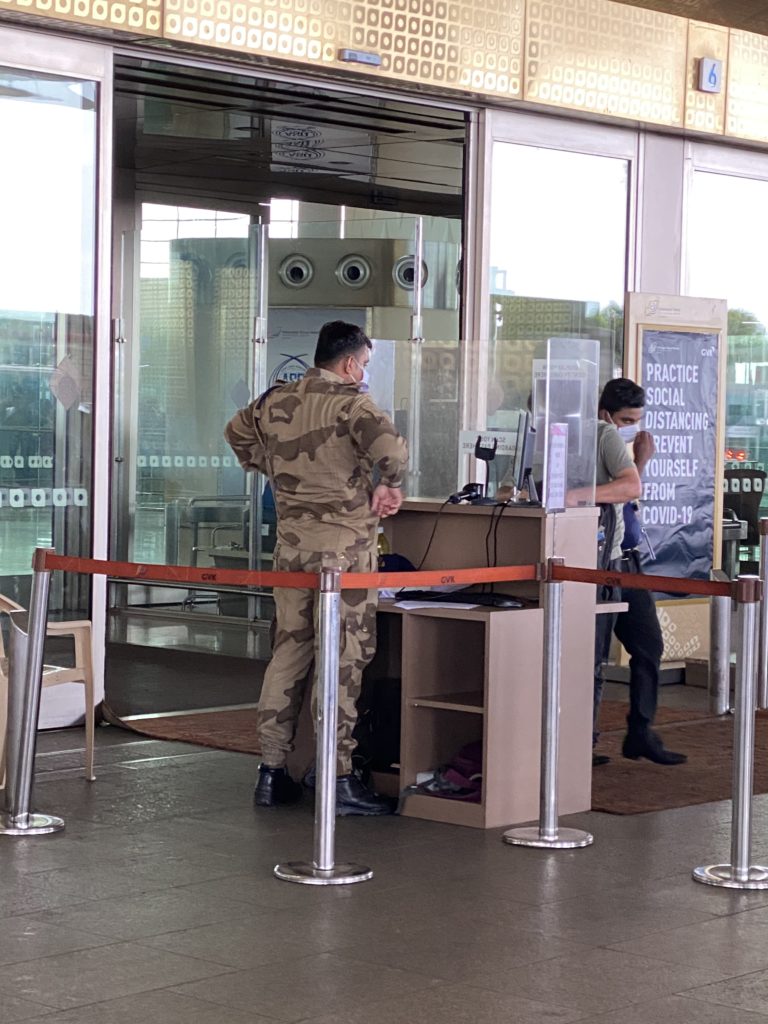
At the airport, there is a battery of self-check-in counters, and you are supposed to print your boarding pass and your baggage tag here if you have not already printed it at home. Mumbai Airport could sure do away with the requirement to have a physical boarding pass, but I am not sure why is it still there. However, they have introduced a new technology which pops up the keyboard on your phone screen via Bluetooth if you don’t want to touch the monitors. We printed our boarding passes and baggage tags and self-tagged our bags. IndiGo also provides you baggage tags to print at home if you so wish. You have to stick them on top of your bag.

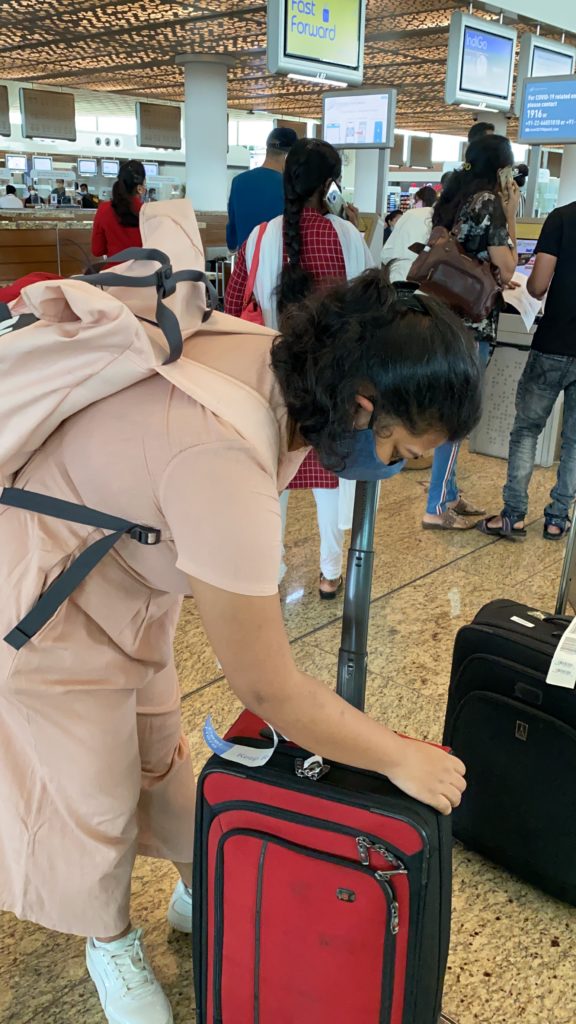
Once the bags were tagged, we proceeded to the self- bag drop counters. There were enough IndiGo personnel at the airport terminal, except the new processes make everything contactless, so you need to work things on your own while they would guide you through it.
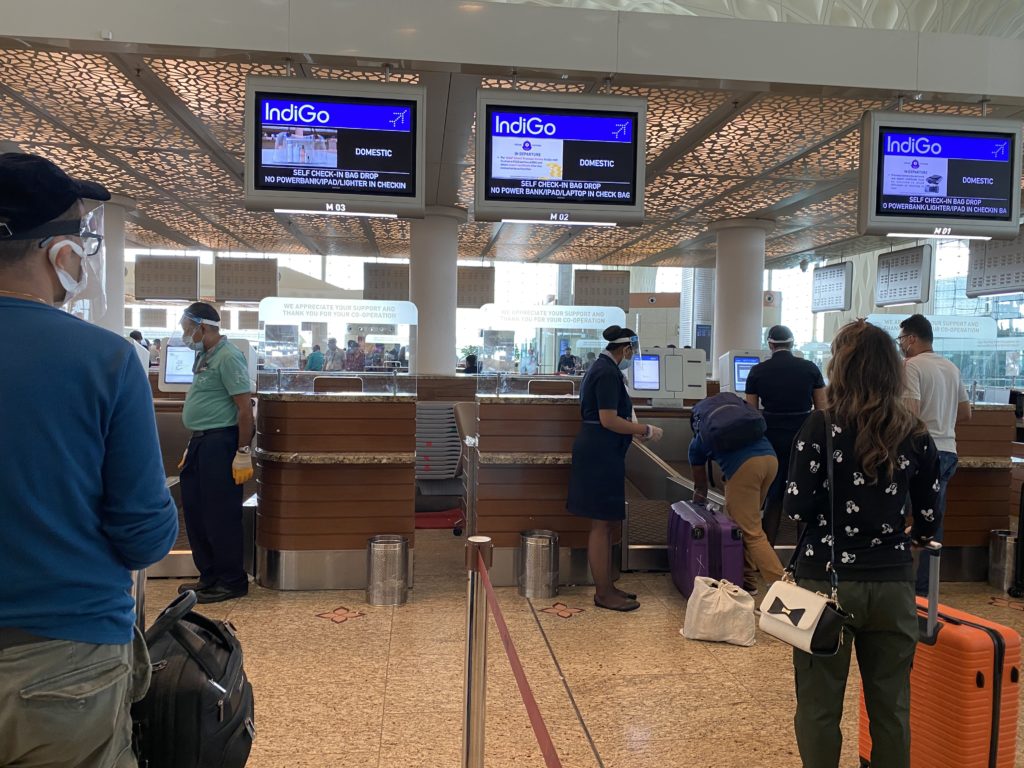
There is new technology now at the Mumbai airport where IndiGo has adapted processes around it. At the front of the queue, my baggage tag and my boarding pass were tagged together to match via the barcode scanner. I did not touch the machine; only authorised personnel did. Then I put my bag on the belt, and it went away just as it usually would. In another era, I would expect this process to go fully automated without the need for an agent to monitor it, post-pandemic maybe. I got an email and a text message from IndiGo informing me that my bag was collected and the tracking number as well if I would ever need it.
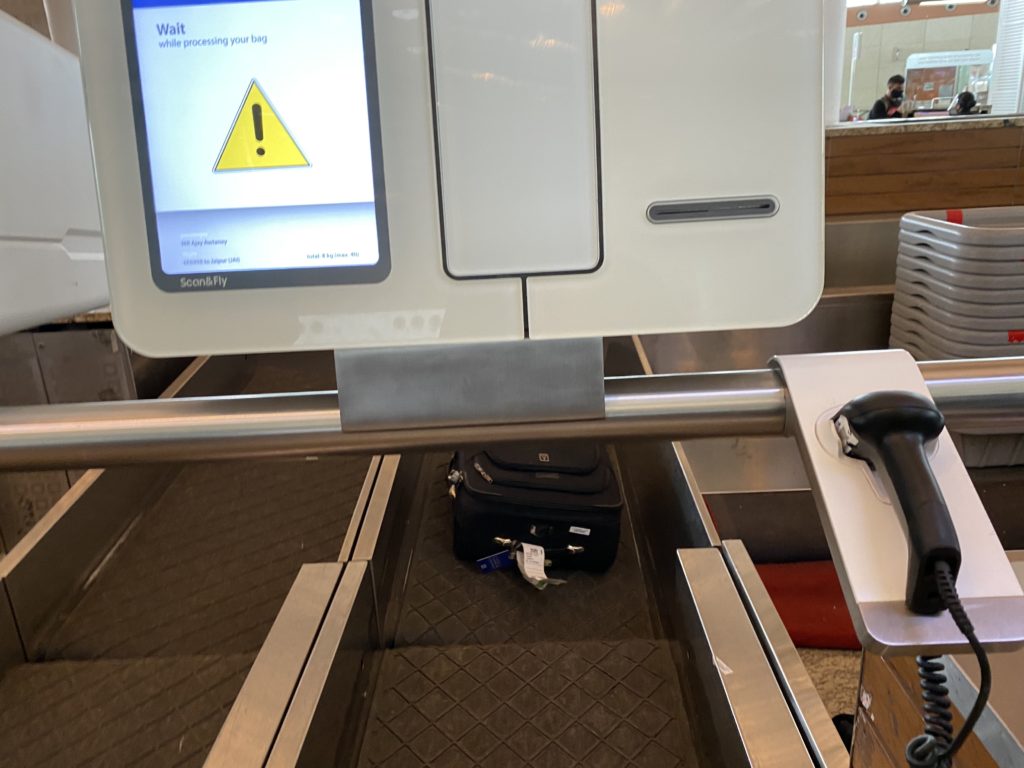
After the bag drop, we proceeded to level 3, where we went through the security check process. Unfortunately, social distancing here was mythical, and even the security processes could have been done better. Many years ago there was the conversation of installing Automated Tray Retrieval Systems (ATRS), but it is not here so far, nor are the full-body scanners which were supposed to take over from manual frisking.
Airside, we proceeded to the GVK Lounge, which has also seen significant changes. I will write a separate post about it.
Pre-Boarding & Boarding
Shipra and I arrived earlier at the boarding gate, where we were handed out our Passenger Safety Kit. Onboard aircraft in India, you are mandated to wear a face mask and a face shield, and the airline supplied it to us at the gate. Also, there was some sanitiser for use on the flight.
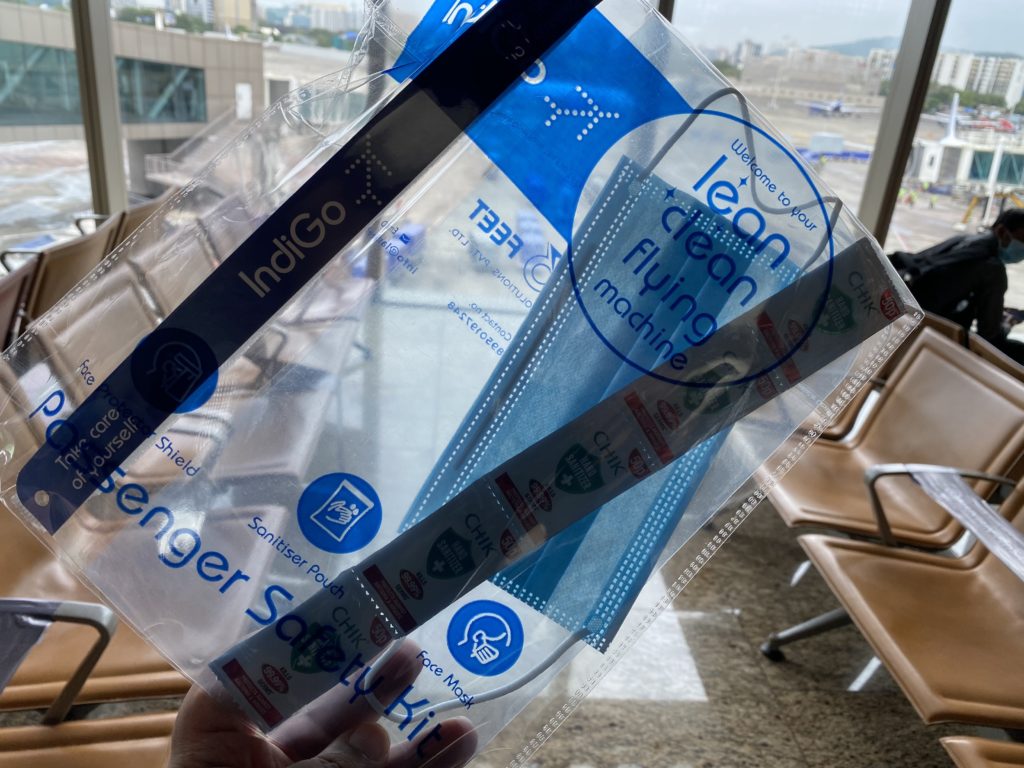
We put on our masks and visors as we waited to board the plane. Contrary to the belief that masks can’t be worn for long, on this day, I had worn my mask when leaving home, and I only removed it after arriving at my hotel in Jaipur, for a total of about 6-7 hours without any discomfort. But the fogginess on the shield, no one has still discovered any way around that.
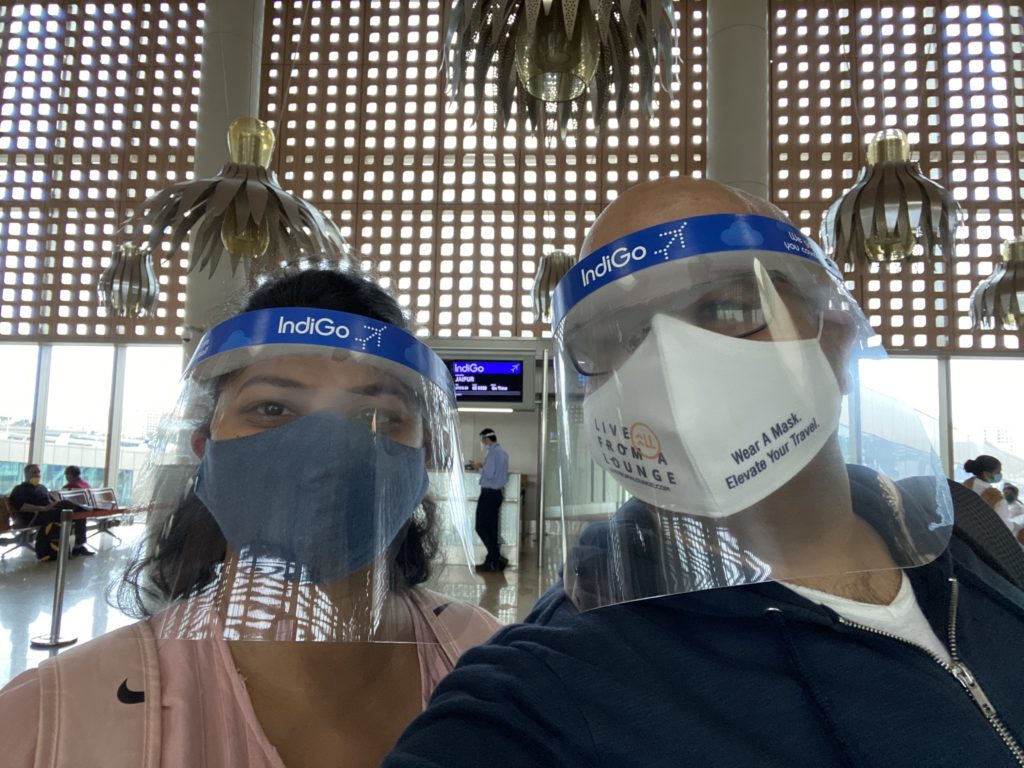
Alternate seats are blocked so that people don’t sit too close to each other while waiting for their flight at Mumbai Airport.
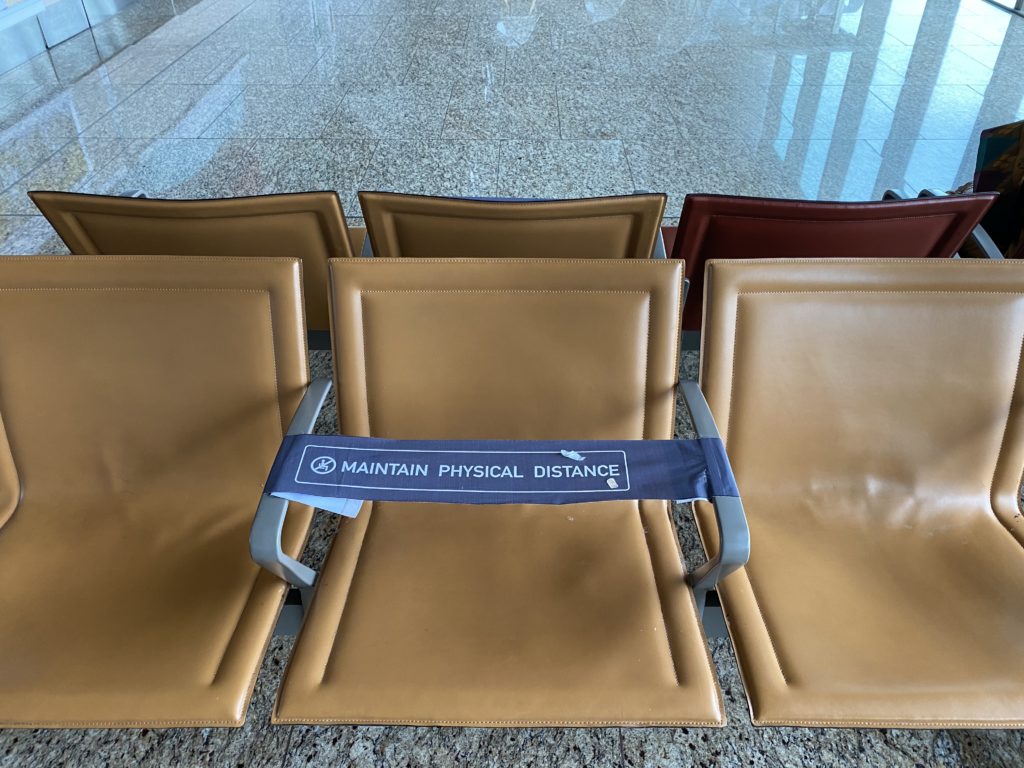
We pre-boarded the plane so that I could check out how the Lean Clean Flying Machine was being cleaned up. At the boarding gate, we were asked to scan in ourselves on the flight, rather than IndiGo’s gate agent taking the boarding pass, scanning us in and giving it back. Another instance of making sure that passengers and agents don’t make contact. (Always hold your boarding pass from the back so that you don’t touch the glass).
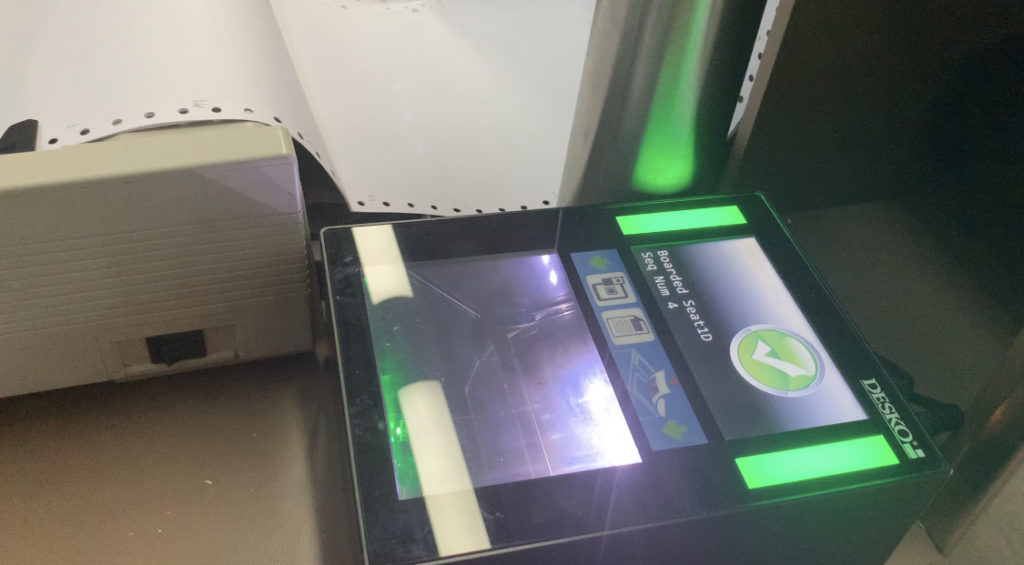 A gate agent took us along inside, and the entire corridor and jetbridge are marked one metre apart so that people don’t crowd together.
A gate agent took us along inside, and the entire corridor and jetbridge are marked one metre apart so that people don’t crowd together. 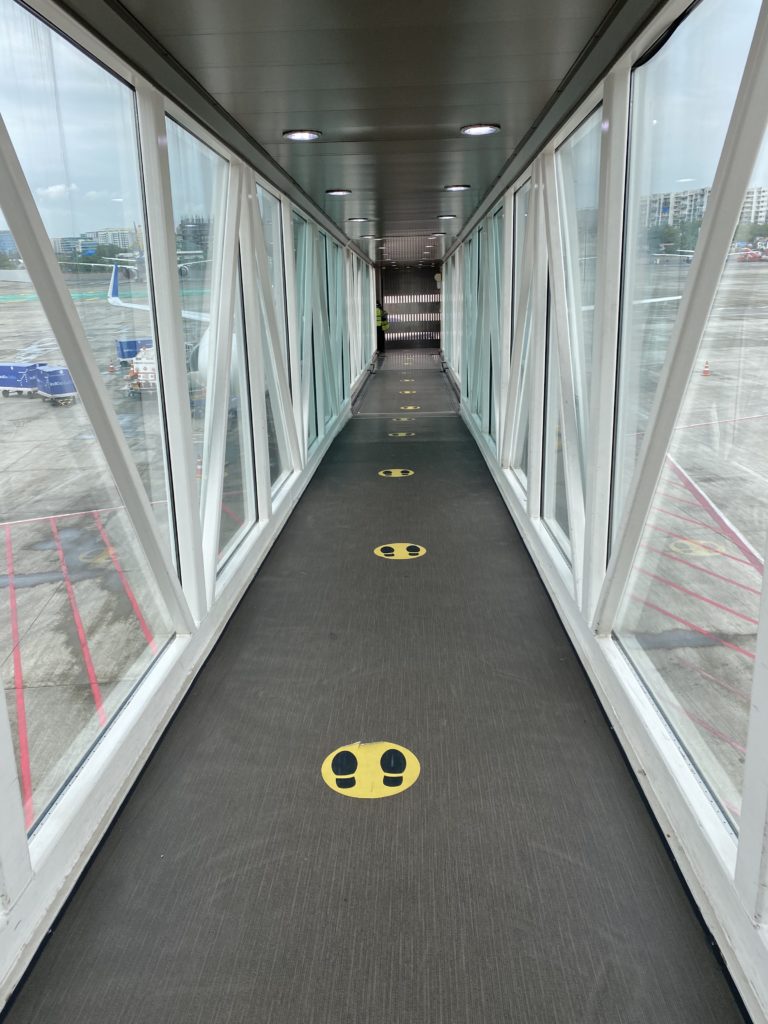
We were handed over to the cabin crew who were dressed in full protective gowns on this flight, along with a mask, gloves and a face shield. The mandate is simple, don’t manage to contract the virus or pass it on to anyone else, and masks are the easiest way to break the chain. The precautions being taken are actually more than the western carriers, where face coverings are the only mandate at the moment.
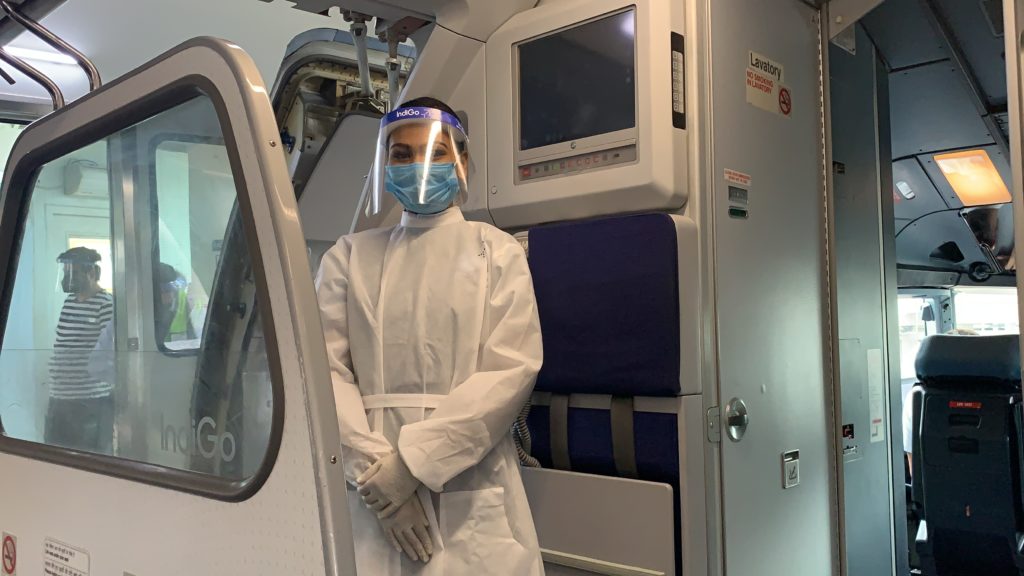
I’ve seen planes being cleaned when I am on board before and in transit on a flight, but what I saw here was different. Each seat and all sorts of touchpoints on the plane were being wiped down with Airbus-approved disinfectants. These included the arm-rests, tray tables (inside and outside), seat belt clips, the overhead bin surfaces and the panel above your seat where lights and airflow nozzles are installed. This is to ensure that people in this shared space are careful not to have to touch anything that was not disinfected before the flight.

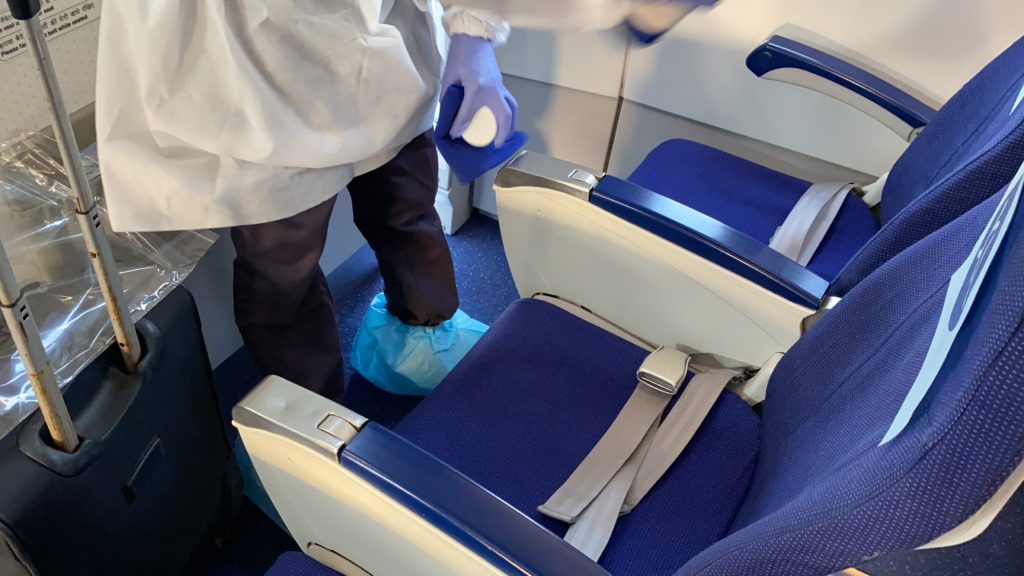
Subsequent to seeing the entire process (more of it in the video below), I was convinced that the airline was doing everything it can to make sure things are safe and there is no contamination on board. 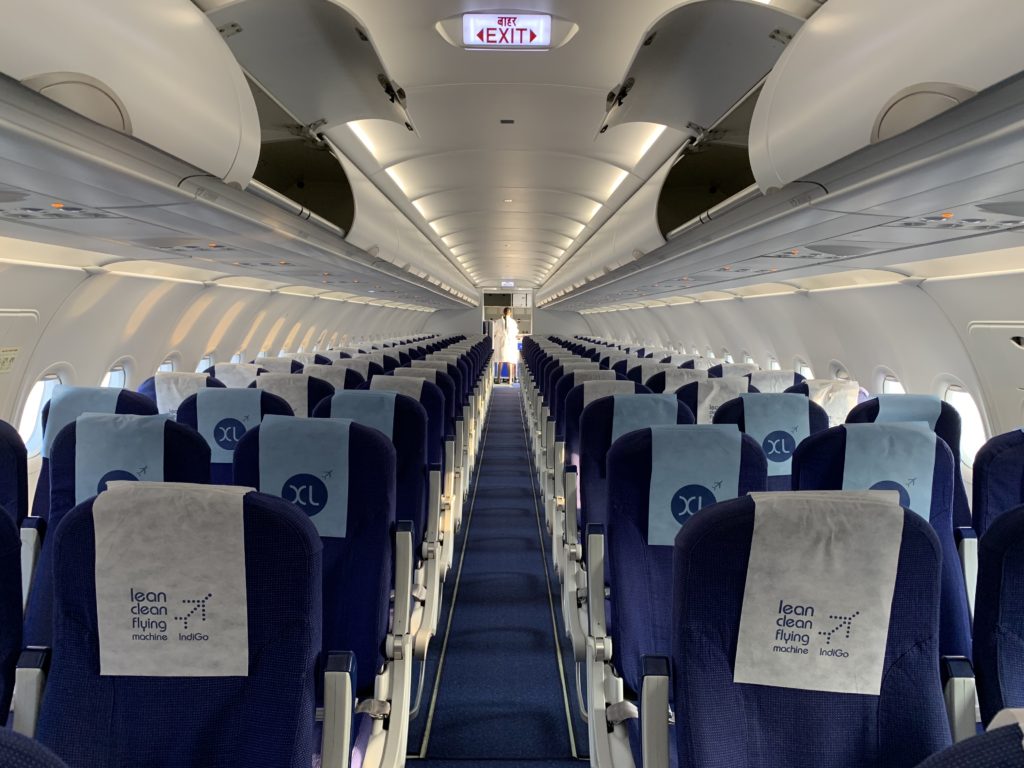
Passengers boarded shortly after, in what looked a relatively orderly fashion. Everyone is advised only to bring their personal effects along, such as a laptop bag or a purse to ensure they don’t cross-contaminate the overhead bins. Water bottles were being handed out if someone needed water to drink, instead of the paper cups from earlier. Middle-seat occupants also had a gown on for added protection.
Enroute
Soon, we were on our way to the taxiway, and airborne shortly after. As soon as we had climbed, the cabin crew started the meal service. Meals were only being served to passengers who had already pre-booked them under the 6ETiffin. After all, what is a flight without a meal?
Soon enough, we had a Chicken Junglee and a Paneer Tikka sandwich being served to us, and it came along with a choice of drink, which included cola, cold coffee, thandai and another option which I can’t recall at the moment. Shipra and I shared a sandwich and a drink, and then put our masks back on. We kept our face shield on for the duration of eating our meal.
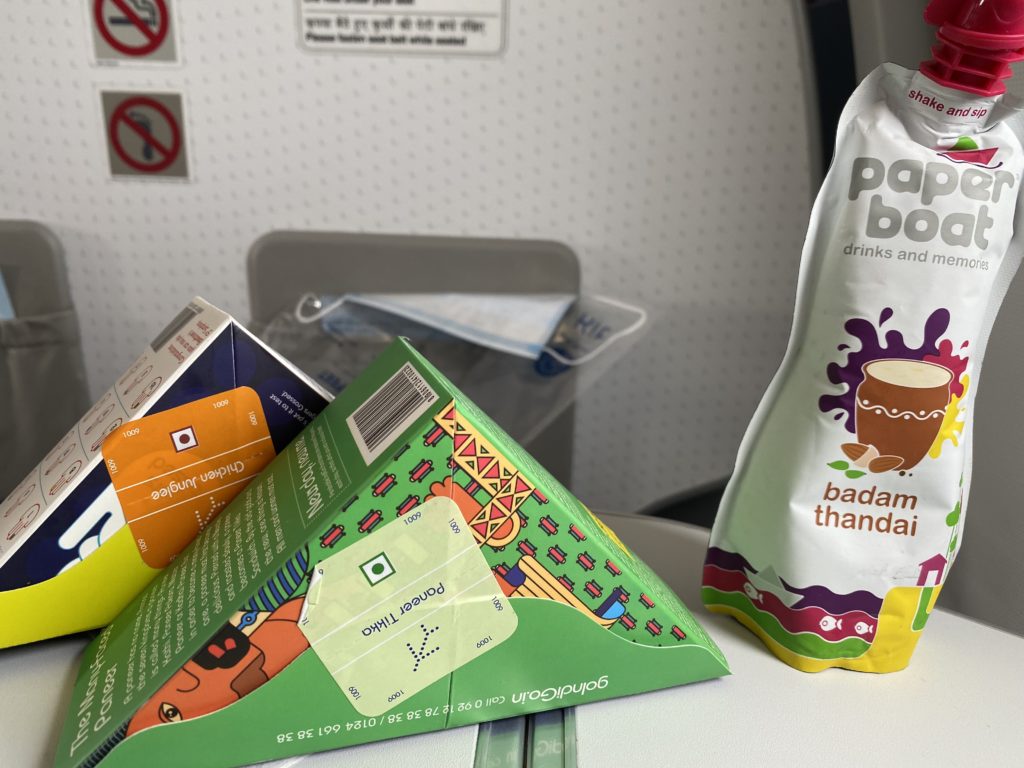
The rest of the flight was pretty uneventful. I mostly saw people be in their seats and not use the loos, which is also a good move.
Arriving into Jaipur
En route to Jaipur, and on arrival, there were frequent announcements from the flight deck as well as the cabin crew to keep masks on, as well as to not jump out of their seats altogether in one go. Luckily, people complied, and people started to get out of the plane front to back, with one-two rows rising at a time. The bus also had not more than about 20 people in one bus.
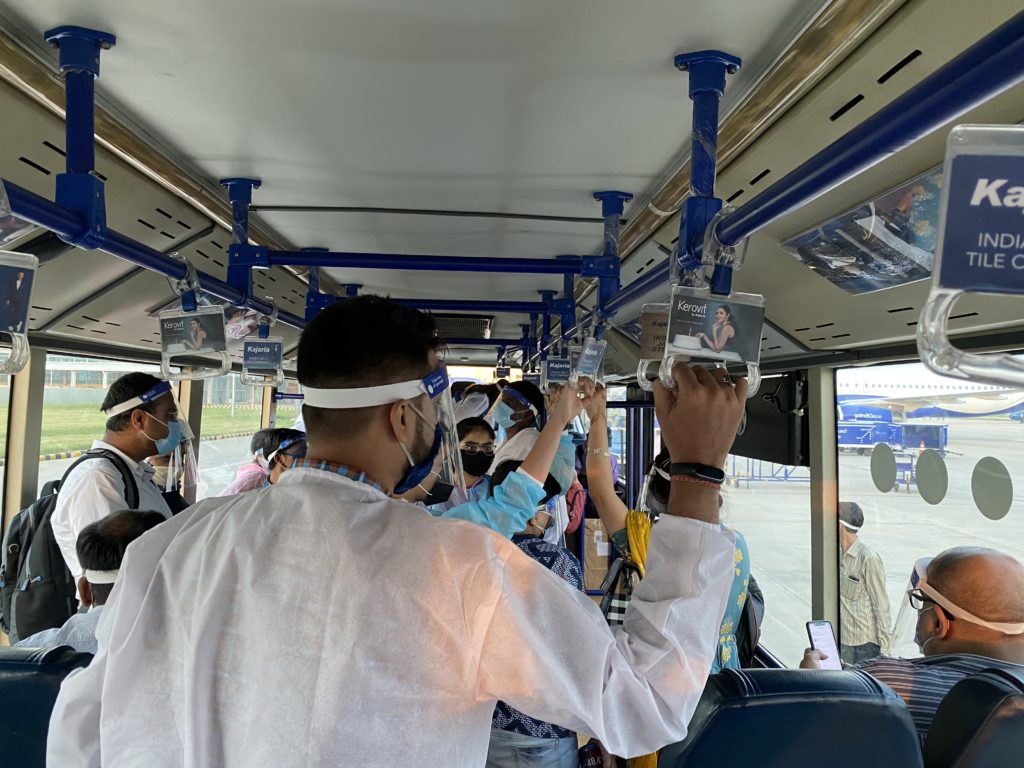
On the baggage belt, we picked up our bags and queued up to have our contacts written down and have our temperature measured before we were allowed to leave the airport.
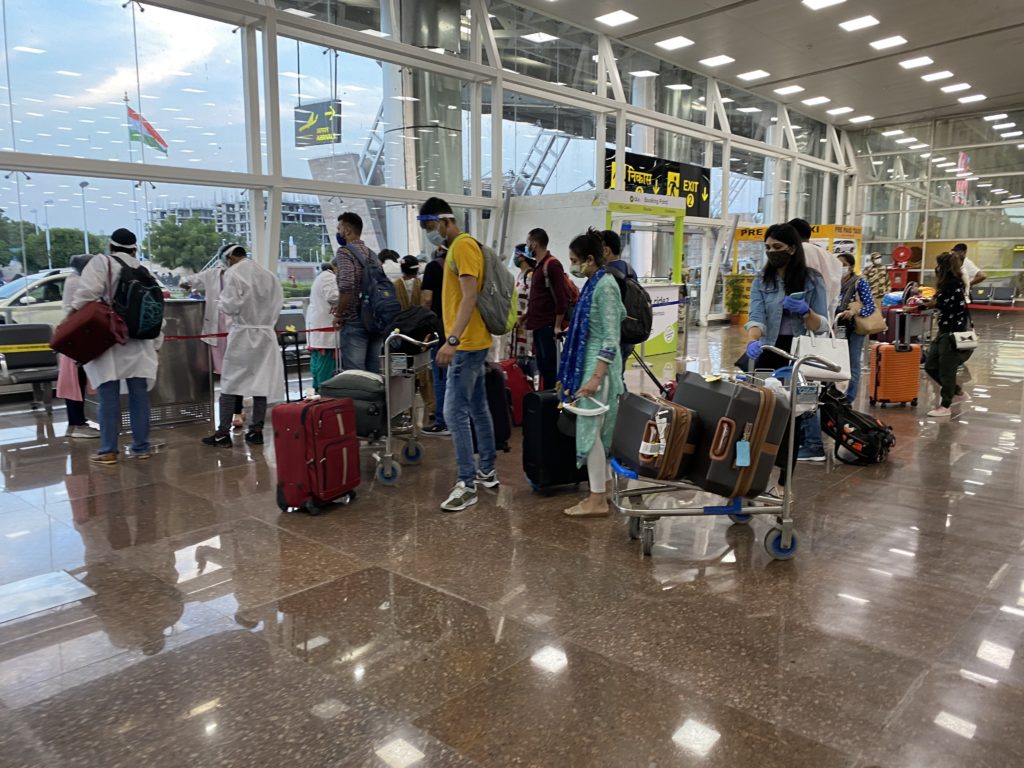
Video
I also made a video to demonstrate this journey as I felt not everything could go on the written word. It has been put up on our YouTube Channel as well. The video shows the entire cleaning process in detail as well, and you should watch it if you are interested in behind the scene footage before you get on the plane.
It was the first time Shipra, and I left Mumbai on a plane after a very long time, and we felt every bit safe with all the precaution that was being taken at the airport and by the airline every step of the way in terms of cleanliness and hygiene. The moniker Lean Clean Flying Machine suits IndiGo very well.
On the return leg, everything was the same, except people were in a rush to get off the plane. However, IndiGo’s cabin crew ensured that they would all go back to their seats and ensured row-wise disembarkation took place at Mumbai.
Have you taken a flight recently in India? What was your experience flying during the pandemic?
Liked our articles and our efforts? Please pay an amount you are comfortable with; an amount you believe is the fair price for the content you have consumed. Please enter an amount in the box below and click on the button to pay; you can use Netbanking, Debit/Credit Cards, UPI, QR codes, or any Wallet to pay. Every contribution helps cover the cost of the content generated for your benefit.
(Important: to receive confirmation and details of your transaction, please enter a valid email address in the pop-up form that will appear after you click the ‘Pay Now’ button. For international transactions, use Paypal to process the transaction.)
We are not putting our articles behind any paywall where you are asked to pay before you read an article. We are asking you to pay after you have read the article if you are satisfied with the quality and our efforts.


I had similar experience with Indigo Pune -delhi. However experience on same indigo delhi Bagdogra was very bad.
Same here they provided the kit. However not enforcing wearing it before boarding as a result hardly 10-15 people were wearing face shield. Majority was joy wearing mask. I had to complaint to flight attendant as one person seating next was continuously coughing and sneezing and not wearing mask at all
I take flights on 21 dec from mumbai to indore then indore to pune via amd. But i dont have to print boarding pass any where. Soft copy in mobile work in all these 4 airport. Also on gate in mumbai security does not scan board pass not even ask. Just id card and ticket they check. I have a very different experience then yours.
Hey Ajay, can you comment on the RT PCR test facilities that have opened inside Mumbai airport? Besides the usual media piece, I can’t seem to find any articles about what’s the actual procedure like, including actual wait times. Is that something you may know more about?
@Zain, I tried to locate it at the airport but it seems it was hived off near international arrivals or something so could not find out much.
Did you visit the airport recently? If yes, then did you see the body scanning machines? For domestic flights?
Are senior citizens (age 63, and 84) allowed to travel on flights now ?
@Arun, senior citizens were never barred from travelling on flights. It was an advisory which continues, but it is not a rule.
Nice looking
IndiGo the best n most trust worthy airline…I wish them great success and SAFE SKIES ALWZ…. Good Luck My blue bird ❤️✈️
Damn I miss paper boat products! I load up on them on my yearly visits back home. Curse you covid-19 that I can’t indulge in it this year. Thank you for your review.
Nice post! Thanks for sharing your travel experience with us.
yes, because the air inside the aircraft is HEPA filtered. so one can safely travel anywhere.